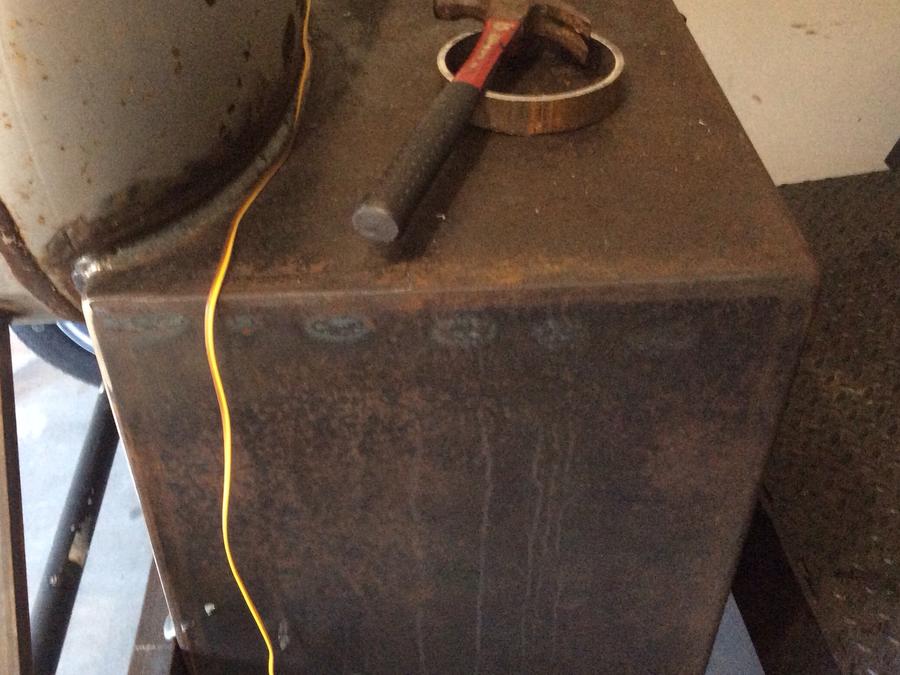I actually have three different ideals for the burner design running through my mind. So I'm going to hold off cutting up the pipe just yet. A circle? An s shape caped on the end, or a m shape ? What would give me the most even flame?
Trying to decide what direction I want the flame pointing, in relation to the grease shield, and how I want to do the grease shield. So that will also effect my decision on the shape of the burner.
I'm leaning toward making a 36" x 12" to 14" rectangle ( but with rounded corners) and aim the flames slightly inward about one o'clock or so, the weld a piece of 1/4" flat bar directly to the pipe with it sloped so as the grease would run towards the outside, but place it so that the inner lip extends past the holes to protect them from drippings. But that would limit me to a single ribbon of flame, and less btu. Or I could do two lines of holes at 11 and 1 o'clock and raise the flat bar up about an inch off of the pipe and position it flat to protect both lines of holes. I've thought about angle, but just feel to be wide enough , it would trap too much heat and get too hot.
And do I want to heat the whole bottom rack, or just one side, or just the front? Hard for me to decide, and I'd really like to keep it to just one burner / burner control, with it located dead center in front of the tank level with the serving rack.
Anyway, still have plenty of other steps to complete, so I'll just push this part back a few weeks until I decide.
Trying to decide what direction I want the flame pointing, in relation to the grease shield, and how I want to do the grease shield. So that will also effect my decision on the shape of the burner.
I'm leaning toward making a 36" x 12" to 14" rectangle ( but with rounded corners) and aim the flames slightly inward about one o'clock or so, the weld a piece of 1/4" flat bar directly to the pipe with it sloped so as the grease would run towards the outside, but place it so that the inner lip extends past the holes to protect them from drippings. But that would limit me to a single ribbon of flame, and less btu. Or I could do two lines of holes at 11 and 1 o'clock and raise the flat bar up about an inch off of the pipe and position it flat to protect both lines of holes. I've thought about angle, but just feel to be wide enough , it would trap too much heat and get too hot.
And do I want to heat the whole bottom rack, or just one side, or just the front? Hard for me to decide, and I'd really like to keep it to just one burner / burner control, with it located dead center in front of the tank level with the serving rack.
Anyway, still have plenty of other steps to complete, so I'll just push this part back a few weeks until I decide.











